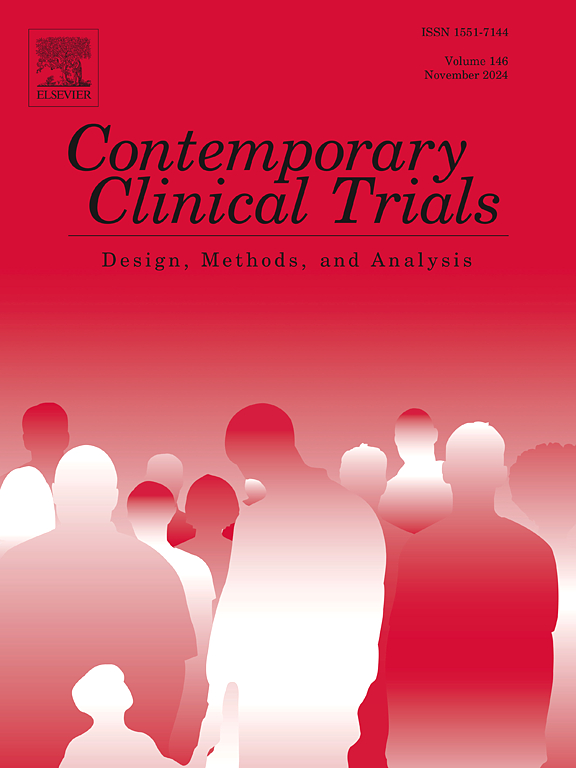Brain-targeted goal-directed therapy in high-risk patients undergoing major elective surgery: Study protocol for the BRAIN-PROMISE randomized trial
IF 1.9
3区 医学
Q3 MEDICINE, RESEARCH & EXPERIMENTAL
引用次数: 0
Abstract
Background
Perioperative complications can lead to increased morbidity and mortality, diminished patient's quality of life, and substantial economic burden. Elderly and frail patients are particularly vulnerable, facing higher risks of postoperative cognitive dysfunction and delirium.
Perioperative choices and anaesthesia management, including hemodynamic monitoring, anaesthesia depth, and fluid therapy can significantly impact long-term outcomes. Near-infrared spectroscopy (NIRS) is a technique for measuring regional oxygen saturation of brain tissue (rSO2) during surgery. Monitoring cerebral perfusion through rSO2 could estimate perfusion changes, identify early tissue hypoxia, and mitigate postoperative complications. Nonetheless, there is a lack of studies exploring NIRS-based hemodynamic optimization protocols in high-risk surgical populations.
Object
This prospective randomized controlled trial has been designed to evaluate whether NIRS-targeted goal-directed therapy can reduce rSO2 drop episodes and improve outcomes in high-risk elderly patients undergoing major surgery.
Methods
This randomized controlled trial will enroll hypertensive elderly patients aged ≥65 or with a clinical frailty score ≥ 5, undergoing moderate to high-risk surgery under general anaesthesia. Participants will be randomized 1:1 to either NIRS-targeted management or standard care, with NIRS monitoring applied to both groups but only guiding intervention in the experimental group, and with anesthesiologist blinded to NIRS value in control group. Primary outcomes include the overall incidence of perioperative complications at 30 days, secondary outcomes assess cognitive dysfunction, delirium, length of stay and mortality at 90 days.
Conclusions
This study presents an innovative approach on the effectiveness of NIRS-targeted goal directed for improving perioperative outcomes in high-risk elderly patients undergoing general anaesthesia.
Trial registration: clinicaltrials.gov registration, n. NCT04266574,
高危患者择期大手术的脑靶向靶向治疗:BRAIN-PROMISE随机试验研究方案
背景围手术期并发症可增加发病率和死亡率,降低患者的生活质量,并造成巨大的经济负担。老年人和体弱患者尤其脆弱,术后认知功能障碍和谵妄的风险较高。围手术期的选择和麻醉管理,包括血流动力学监测、麻醉深度和液体治疗,可以显著影响长期预后。近红外光谱(NIRS)是一种在手术过程中测量脑组织区域氧饱和度(rSO2)的技术。通过rSO2监测脑灌注,可以评估灌注变化,早期发现组织缺氧,减轻术后并发症。然而,在高危手术人群中,缺乏基于nir的血流动力学优化方案的研究。目的:本前瞻性随机对照试验旨在评估nirs靶向靶向治疗是否可以减少接受大手术的高风险老年患者的rSO2下降发作并改善预后。方法本随机对照试验将招募年龄≥65岁或临床虚弱评分≥5分的高血压老年患者,在全身麻醉下行中高危手术。参与者将以1:1的比例随机分为NIRS靶向治疗组和标准治疗组,两组均应用NIRS监测,但实验组仅指导干预,对照组麻醉医师不知道NIRS值。主要结局包括30天围手术期并发症的总发生率,次要结局评估90天的认知功能障碍、谵妄、住院时间和死亡率。结论本研究提出了一种创新的方法,探讨了nirs靶向目标对改善老年高危全身麻醉患者围手术期预后的有效性。试验注册:clinicaltrials.gov注册,编号NCT04266574;
本文章由计算机程序翻译,如有差异,请以英文原文为准。
求助全文
约1分钟内获得全文
求助全文
来源期刊
CiteScore
3.70
自引率
4.50%
发文量
281
审稿时长
44 days
期刊介绍:
Contemporary Clinical Trials is an international peer reviewed journal that publishes manuscripts pertaining to all aspects of clinical trials, including, but not limited to, design, conduct, analysis, regulation and ethics. Manuscripts submitted should appeal to a readership drawn from disciplines including medicine, biostatistics, epidemiology, computer science, management science, behavioural science, pharmaceutical science, and bioethics. Full-length papers and short communications not exceeding 1,500 words, as well as systemic reviews of clinical trials and methodologies will be published. Perspectives/commentaries on current issues and the impact of clinical trials on the practice of medicine and health policy are also welcome.

 求助内容:
求助内容: 应助结果提醒方式:
应助结果提醒方式:


